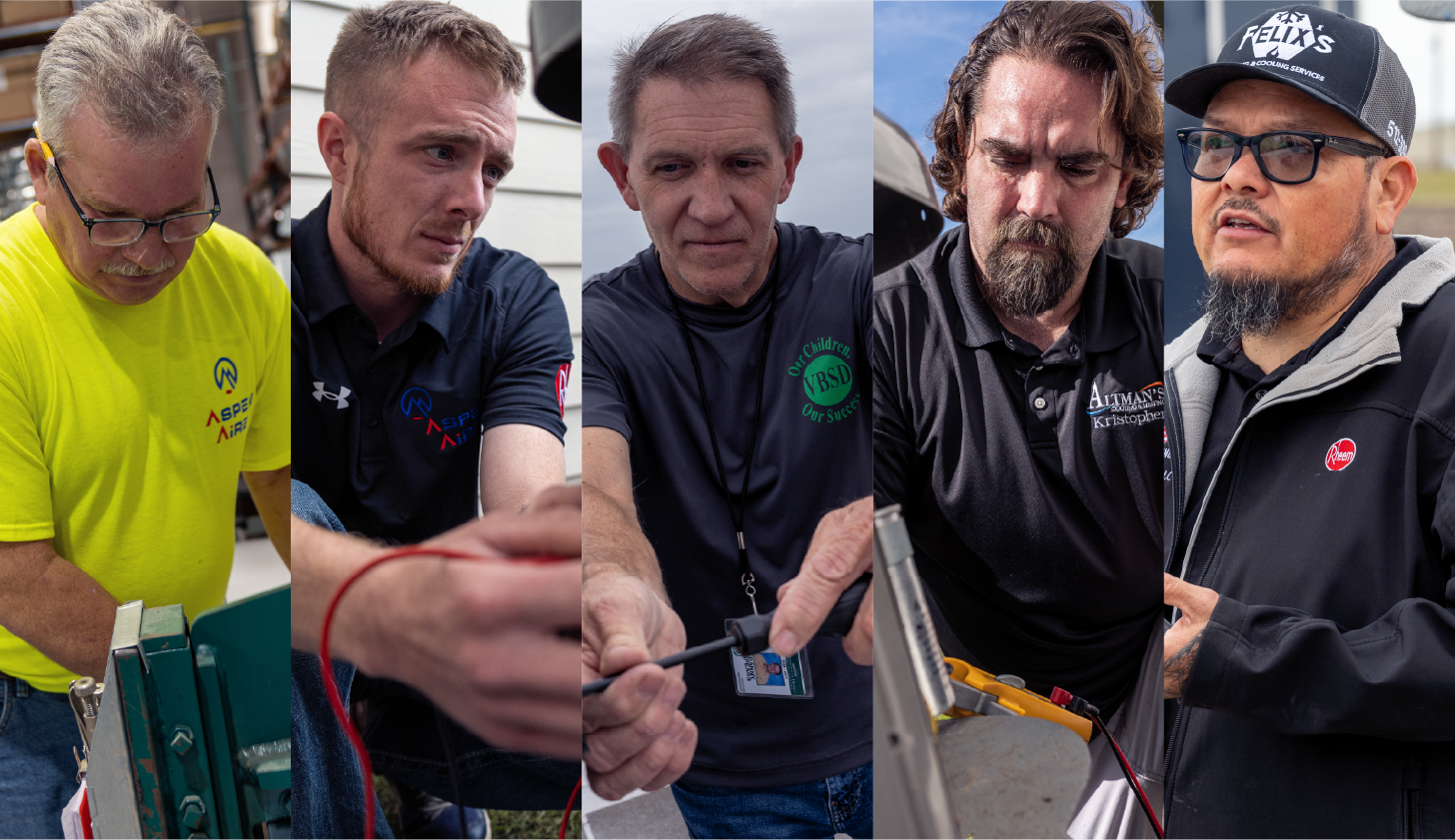Decarbonization: The Movement and What It Means for Your Home
August 4, 2021
Learn some of the basics on being a carbon-conscious and environmentally proactive homeowner.


Carbon-Conscious Moves Homeowners Are Making
 With advancements in technology and more awareness of sustainable products and practices, it’s easier than ever to be a carbon-conscious and environmentally proactive homeowner. However, it can be hard to know what is good for the earth, and how to balance that with your home’s needs and budget, all while keeping an eye on your carbon footprint. The equipment and appliances that help power our homes and keep them comfortable use a variety of fuel sources. As new federal, state and local policies focus on mitigating climate change and actionable steps toward decarbonization and electrification come into effect, some homeowners are left wondering, “What do I need to know?”
With advancements in technology and more awareness of sustainable products and practices, it’s easier than ever to be a carbon-conscious and environmentally proactive homeowner. However, it can be hard to know what is good for the earth, and how to balance that with your home’s needs and budget, all while keeping an eye on your carbon footprint. The equipment and appliances that help power our homes and keep them comfortable use a variety of fuel sources. As new federal, state and local policies focus on mitigating climate change and actionable steps toward decarbonization and electrification come into effect, some homeowners are left wondering, “What do I need to know?”
We talked with Jeff Goss, senior manager for residential systems category at Rheem, to help build out the basics for homeowners on what to know, what to ask, and who to trust in making changes to your home in the pursuit of cleaner energy.
What is Decarbonization and Electrification?
Decarbonization is cutting our dependence on resources that produce high levels of carbon emissions and greenhouse gases. Currently, we pull the largest portion of our energy from fossil fuels, such as propane, coal and natural gas to run our furnaces, boilers and water heaters, as well as industrial machinery. And as the demand for fossil fuels increases, the supply decreases since it’s a finite resource, and burning these fuels adds greenhouse gases to our atmosphere.
The idea of decarbonization is to create a cleaner, more future-friendly option to handle the demands of modern civilization. To that end, experts are looking into alternative sources of power and energy that will alleviate our reliance on fossil fuels and ways to lessen or reverse the greenhouse gases our machines and lifestyle are emitting. Building Electrification is one of most cost-effective and actionable ways to help potentially reduce carbon dioxide (CO₂). Additionally, switching to electric space and water heating can have substantial air quality benefits.
“There’s kind of a flow of events here and we’re starting to see that there has to be some regulatory goals established and started at both the federal and the local level,” says Jeff.
So, what does decarbonization look like? The answer involves three equally important steps:
“The front end of this whole chain—decarbonization—is so critical in terms of the regulation. Cleaning up and optimizing the grid is the first major step before we really get into wholesale electrification in the home,” says Jeff. “As it sits today, the grid itself needs to make major strides toward cleaner energy sources and might increase greenhouse gases in a lot of states without necessary upgrades, which of course is against the intended outcome.”
The bottom line is that to decarbonize and move to electrification of the modern world correctly, we have to make sure the energy sources and power grid are properly structured to support electrification. Prepping the grid to move into an all-electrified system requires work and thoughtful consideration at local, state and federal levels. Fortunately, that work has started and is gaining momentum. In parallel, moving into electrifying buildings—even at the residential home level— will prove beneficial in lowering our carbon footprint.
What can I do, specifically?
In addition to being diligent about making environmentally conscious choices—reduce, reuse, recycle—we also must now rethink. And one of the best ways we can make future-forward decisions is within our homes.
If you’re thinking, “But I already have electricity in my home. Is there something more I can do to reduce my home’s carbon footprint?” The answer is yes! There’s always something we can do to offset our energy use and move toward a more sustainable power source.
For example, talk with a Rheem professional about the benefits of an energy-efficient heat pump, which uses electricity to send heat where it’s needed or remove it from where it’s not. Heat pumps also offer a two-for-one benefit since they can provide both cooling and heating and fit in the same space as a traditional air conditioner outside the home.
“If you already have a centrally ducted air conditioning system and you’re replacing the air conditioner outside the home, in most cases a heat pump can be installed instead and work in conjunction with your existing gas furnace,” says Jeff. “The heat pump will be used as the primary heating source for the home, and you’ll only rely on the gas burning furnace during periods of very cold outdoor temperatures. This hybrid system is a great first step towards electrification.”
When you’re ready to replace your gas furnaces with an electric air handler to heat and cool the home, then the infrastructure of the home largely will not have to change. The cost upfront might be in upgrading the electrical panel, but then the reduction in energy and your bills will outweigh that initial cost. “Plus, you’ve now future-proofed your house.”
Jeff also notes that for new construction, some states, like California, are already introducing rebates and incentive programs to help residents transition to whole home electrification and building codes and builders will follow suit.
Building electrification is gaining momentum as a lead source of energy. And as a leading manufacturer of both electric and gas-powered home heating, cooling and water heating systems, we are committed to doing good by our customers, our partners, our employees—and our planet. We are innovating products and practices with the planet in mind and electrification is very much on ours. Explore the we have made as a company including reducing greenhouse gas emissions by 50% and achieving zero waste to landfill in our global manufacturing operations by 2025.







